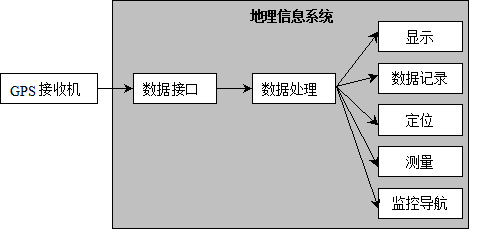As a real-time technology to provide spatial positioning data, GPS can be integrated with Geographic Information System to achieve different specific application objectives: It is mainly used in outdoor dynamic positioning information activities such as tourism and exploration. If not integrated with GIS, spatial positioning can also be achieved by using GPS receivers and paper topographic maps; however, by connecting GPS receivers to a portable computer installed with GIS software and spatial data in the area, the location of GPS receivers can be easily displayed and their trajectories can be displayed in real time, and then the location points can be obtained by using the spatial retrieval function provided by GIS. Information to achieve decision support. Mainly used in land management, urban planning and other fields, using the integration of GPS and GIS, can measure the area of the region or the length of the path. This process is similar to using digitizer to input data. It needs to track the polygon boundary or path, collect the vertex coordinates after sampling, record the coordinate data through GIS, and then calculate the related area or length data. In GPS surveying, we should pay attention to the following problems. Firstly, we need to determine whether the positioning accuracy of GPS meets the accuracy requirements of surveying. For example, the accuracy of surveying homestead needs to reach centimeter level, while the accuracy of measuring a larger area in the field, meter level or even tens of meters level, can meet the requirements. Secondly, we need to measure irregular areas or paths. Determining the sampling principle and selecting different sampling points will affect the final measurement results. It is used for dynamic monitoring of vehicles and ships. After receiving the position data sent back by vehicles and ships, the monitoring center can determine the trajectory of vehicles and ships, and then use GIS spatial analysis tools to judge whether their operation is normal, such as whether they deviate from the scheduled route, whether the speed is abnormal (static), and so on. In case of abnormal, the monitoring center can put forward corresponding treatment measures. These include issuing navigation instructions to vehicles and ships. Fig. 195 System Structure Model of Integration of GIS and GPS # Figure 12-8 describes the system structure model of integration of GIS and GPS. In order to achieve integration with GPS, the GIS system must be able to receive GPS data sent by GPS receivers (usually through serial communication), and then process the data, such as transforming longitude and latitude coordinates into coordinates in the reference frame of GIS data by projection transformation, and finally carry out various analysis operations, in which coordinate number. Data dynamic display and data storage are its basic functions.Positioning #
Measurement #
Monitoring Navigation #
